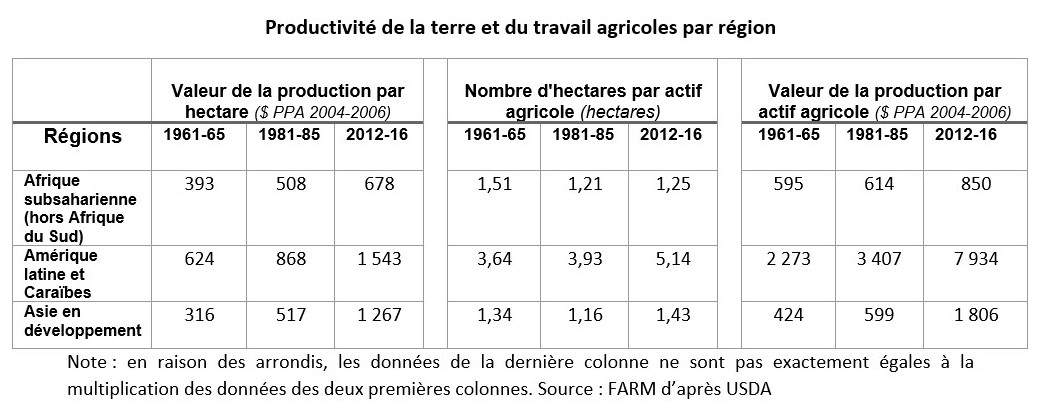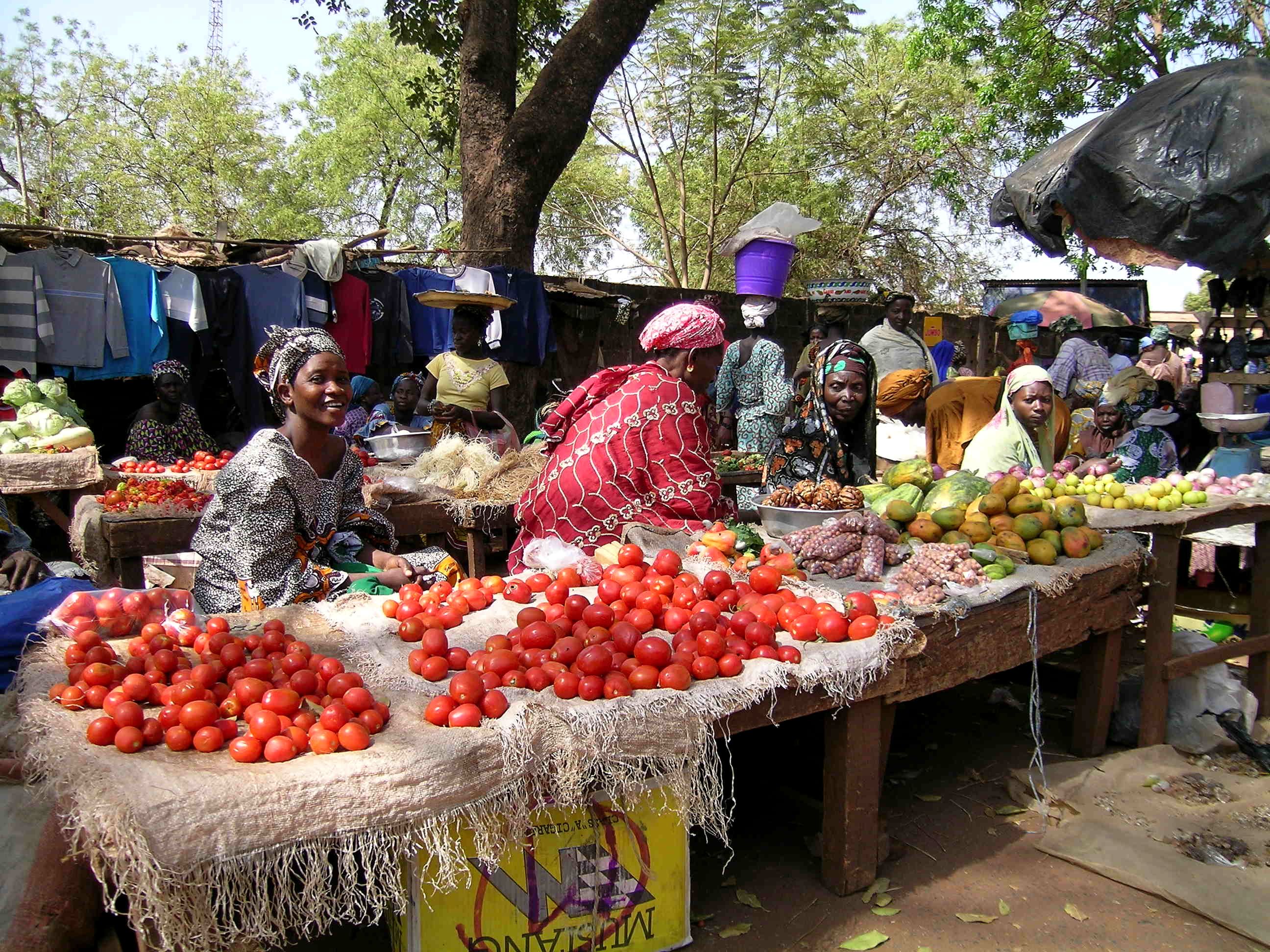FARM – Agricultural Productivity: Half a century in the mirror. And tomorrow ?
“Agricultural productivity: half a century in the mirror And tomorrow?”. Article originally published in French as “Productivité agricole : un demi-siècle dans le rétroviseur. Et demain ?” on the blog FARM (Foundation for Agriculture and Rurality in the World) on 10/15/2019.
Agricultural Productivity: Half a century in the mirror. And tomorrow ?
By Jean-Christophe Debar, director of FARM.
A deluge of numbers: data recently posted online by the US Department of Agriculture (USDA) [1] deliver a ruthless report. Since the early 1960s, the value of agricultural production per hectare in sub-Saharan Africa (excluding South Africa) has increased about four times less than in Asian developing countries (+ 72% vs. + 301%) and twice slower than in Latin America. The comparison is all the more significant as this value is expressed in constant dollars and purchasing power parity. Since, in addition, the available area per farm asset declined in Africa, while it increased in the other two regions, production per farm asset south of the Sahara grew by only 43%, nearly eight times slower than in developing Asia and six times slower than in Latin America. As a result, over the 2012-16 period, an agricultural worker in sub-Saharan Africa produced on average half as much in value as his Asian counterpart and nine times less than his Latin American equivalent (table).

Admittedly, the comparison says nothing of the relative evolution of agricultural incomes in the different regions, because production per asset does not take into account the cost of inputs and agricultural equipment, much more used in Asia and Latin America than in Africa. However, according to the World Bank, disparities in gross added value by asset – an indicator that includes intermediate consumption – is considerable between the three regions [2]. In addition, the growth of agricultural production has come at the cost of strong pressure on the environment, through a massive use of fertilizers, phytosanitary products and deforestation which are problematic, to say the least.
The USDA retrospective data raises questions about future agricultural development trajectories. If, all things being equal, the value of output per farm asset in sub-Saharan Africa increases, by 2050, at the same rate as in the last thirty years (+ 40% in total), it will barely reach 1,200 euros, which is one-third lower than the level recorded today in Asian developing countries. At this rate, the income gap will probably be further widened between urban and rural areas and extreme poverty will be far from eradicated, contrary to the goal set for … 2030 by the Sustainable Development Goals. Increasing productivity must therefore be quicker: a formidable challenge since it involves both developing knowledge and disseminating the techniques and means of production that will enable small African farmers to improve their incomes in ecologically acceptable conditions, while providing affordable food for consumers. It is also a political challenge, because it is up to the structurally impecunious states of the continent to support this transition, whose security and geopolitical dimension is becoming increasingly apparent.
FREECOLD’s view
Agricultural productivity in Africa is only the tip of the problem. Obviously, increasing the volume of production per hectare is necessary, and learning to do so while respecting both nature and humans is a crucial issue for the next few years.
However, the other major problem of agriculture in sub-Saharan Africa is the loss of crops between the field and the plate due in particular to the lack of refrigeration infrastructure.

In a region where, in 2016, only 38% of the population had access to a power grid (just 22% on average in rural areas! [4]), grid being most often unreliable and expensive, selling products is often a race against the clock, … or rather against mold.
Thus, even today, post-harvest losses in Africa represent on average 37% of the plants harvested, and often around 50% for tomatoes and onions. In addition, even beyond the quantitative losses, quality losses especially in terms of nutritional value and taste are widespread. Taken together, these losses contribute to a major shortfall for African farmers: $ 48 billion, equivalent to Ghana’s 2017 GDP! [5]
In these conditions, it is difficult to think of increasing production only to see it rot before it is sold.
Faced with this challenge, FREECOLD offers solutions for access to off-grid refrigeration that are simple, robust and adapted to the African climate.
Our solar cold rooms can store between 200 kg and several tons of food a day, preserving the freshness of fruits and vegetables, meat and fish while leaving time to find a buyer.
For smaller volumes or itinerant local sales, our solar refrigerators and freezers adapt to all domestic and professional needs.
Preserving crop quality through solar refrigeration is an excellent way to ensure both food security and economic development in sub-Saharan Africa.
The challenges faced by African agriculture are thus as many opportunities to seize to develop food security, access to energy in rural areas, and more broadly to combat poverty and inequalities in the region. FREECOLD solar refrigeration solutions have a role to play to make these goals a reality.

